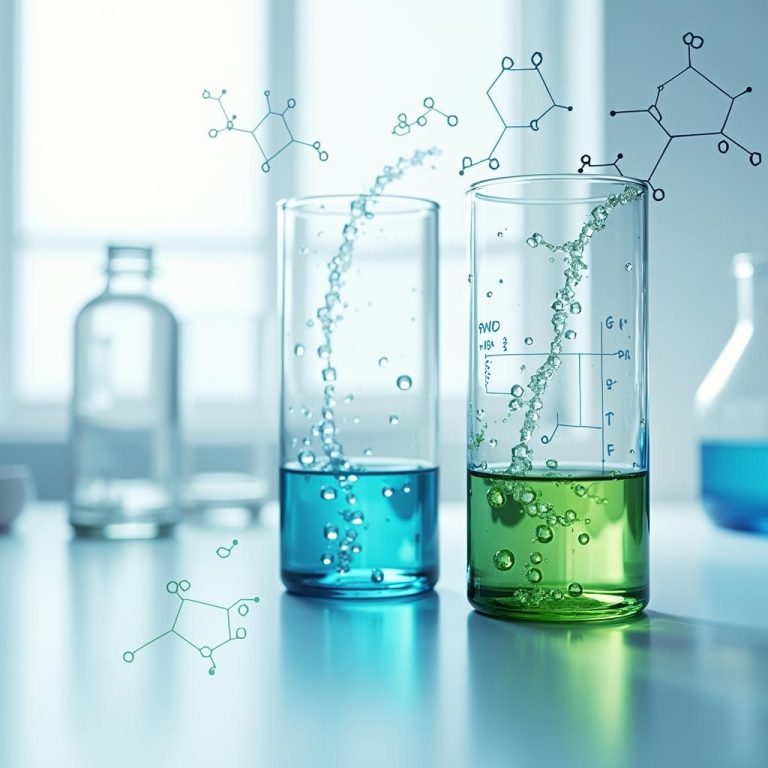Understanding enzyme activity is essential when selecting the right enzyme for industrial applications. At Antozyme, we provide full transparency on enzyme properties, specific activity, and technical specifications — helping you choose the right product with confidence.

Enzyme activity refers to the rate at which an enzyme catalyzes a biochemical reaction. It’s typically measured in enzyme units (U) — one unit represents the amount of enzyme that converts 1 micromole of substrate per minute under defined conditions such as temperature and pH.
Enzyme Activity Formula –
Enzyme Activity (U) = µmol of substrate converted / minute
This measurement is used to assess potency and dosage requirements.
Specific activity measures enzyme activity relative to the amount of total protein (U/mg). It reflects enzyme purity and is commonly used in industrial quality control and R&D.
Formula – Specific Activity = Total Enzyme Activity (U) / Total Protein (mg)
Example: If an enzyme solution has 2,000 U in 50 mg of protein, then:
Specific Activity = 2,000 U / 50 mg = 40 U/mg
This metric helps compare efficiency across different enzyme lots or suppliers.
Different units are used depending on the application or standard –
Unit | Definition | Used In |
U (Unit) | µmol/min | Most industrial enzymes |
IU | International Unit, same as U | Pharma & food |
Katal | mol/s | SI unit (less common) |
Unit Conversions –
Understanding units ensures proper usage and avoids overdosing or underdosing in formulations.
Measuring enzyme activity accurately requires standardized enzyme assay methods. These vary by enzyme type and application:
Common Methods:
For example –
Learn more: Enzyme Activity Assay Methods Explained
Whether you’re buying enzymes for detergents, dairy, or brewing, knowing the enzyme activity:
At Antozyme, we supply enzymes with complete documentation:
To learn more about our enzyme supply capabilities, applications, and industries served, visit our Enzyme Supplier in India page.
Request a datasheet or speak to our team → Contact Us
Antozyme is not just an enzyme supplier in India — we’re also a trusted enzyme distributor and exporter to international clients. Our global logistics and regulatory expertise ensure seamless delivery to markets across Asia, Europe, Africa, and the Americas.
Whether you’re looking for bulk enzyme supply, enzyme exporters, or certified enzyme distributors, Antozyme delivers with quality and compliance.
Get in touch for international shipments, export documentation, and bulk pricing.
Q1. What does enzyme activity mean in industrial applications?
Ans – Enzyme activity measures the rate at which an enzyme catalyzes a reaction, typically expressed in units (U). It helps determine the enzyme’s effectiveness in processes like detergent formulation, food production, or biofuel manufacturing.
Q2. How is the specific activity of an enzyme calculated, and why is it important?
Ans – Specific activity is the ratio of enzyme activity (units) to the amount of protein (mg) present, indicating enzyme purity. Higher specific activity means a more potent enzyme, which is crucial for dosage accuracy and cost-efficiency.
Q3. What are the common units used to measure enzyme activity?
Ans – The most common units are Units (U), International Units (IU), and Katal. For industrial enzymes, U and IU are mostly interchangeable, while Katal is a standardized SI unit used less frequently.
Q4. Which assay methods are used to measure enzyme activity?
Ans – Common assay methods include colorimetric (detecting color changes), titrimetric (measuring titrant volume), and fluorometric (measuring fluorescence). The choice depends on the enzyme type and application.
Q5. Why is understanding enzyme activity critical for industrial enzyme supply?
Ans – Knowing enzyme activity ensures the correct dosage, maintains batch consistency, and impacts product performance and cost. It helps manufacturers optimize formulations and avoid under- or overdosing.
Q6. How can I verify the enzyme activity and quality before purchase?
Ans – Reliable suppliers provide detailed technical datasheets, including specific activity, assay methods used, and Certificates of Analysis (COA). Always request these documents for quality assurance.